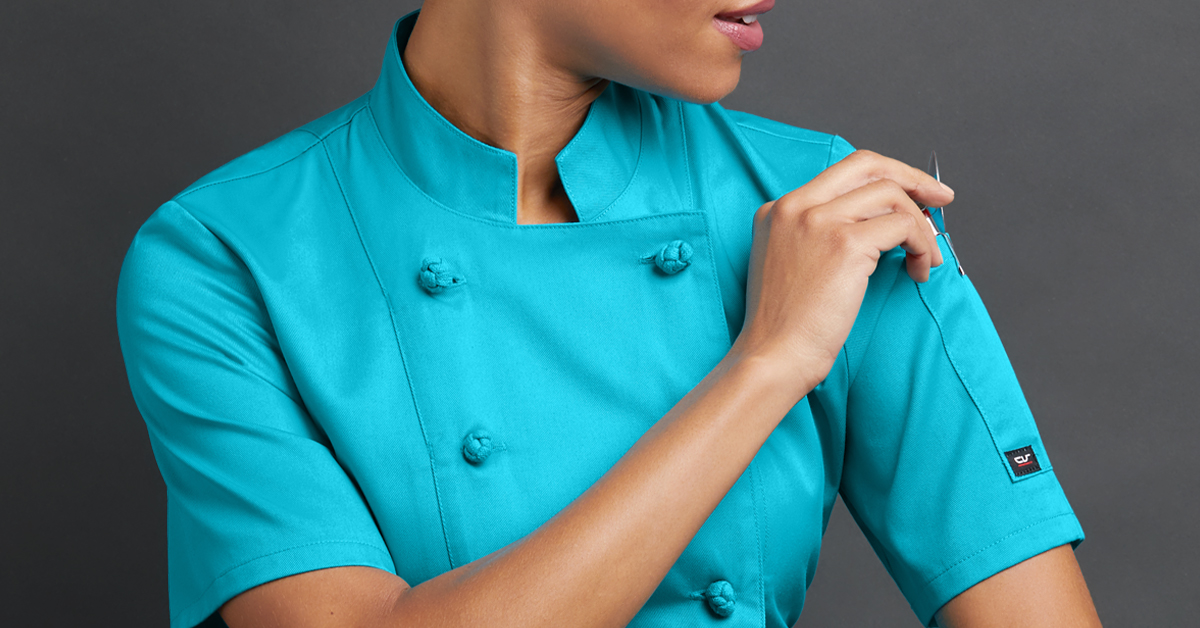Why do Chef Coats have 2 Rows of Buttons?

Chef coats are a staple of the culinary profession, with their crisp, white appearance and practical design. One feature that sets chef coats apart from other types of uniforms is the double row of buttons that runs down the front of the garment. While this may seem like a minor detail, the design of the chef coat is actually quite intentional, and the double row of buttons serves several important purposes. In this blog, we will explore the history and significance of the double row of buttons on chef coats.
Double the buttons, double the flavor
The design of the chef coat can be traced back to the 19th century, when chefs began to wear full-length coats as a way to protect their clothing while they worked. At the time, chef coats were typically made of heavy, dark-colored materials such as wool, and they were often decorated with elaborate embroidery or other embellishments. However, as the culinary profession evolved, chefs began to favor a more practical and functional style of clothing, and the modern chef coat was born.
First and foremost, the double row of buttons on chef coats is designed to protect the wearer from hot liquids and spills. In a busy kitchen, accidents are bound to happen, and hot liquids such as boiling water or hot oil can easily spill onto a chef's clothing. The double row of buttons helps to create a barrier between the chef's skin and the hot liquid, providing an extra layer of protection in case of spills.

- The double row of buttons ensures that the coat stays securely fastened, which can be especially important when working with hot items.
- The double row of buttons on the chef coat was likely inspired by military uniforms, which often feature multiple rows of buttons. In fact, the chef coat itself can be seen as a type of uniform, with its standardized design and white color representing the cleanliness and professionalism of the culinary profession. By borrowing design elements from military uniforms, the chef coat further reinforces the idea of chefs as disciplined and organized professionals.
- Another benefit of the double row of buttons on chef coats is that it allows for easy customization. Many chefs choose to have their coats embroidered with their name or the name of their restaurant, and the double row of buttons provides a perfect canvas for this type of personalization. Additionally, the buttons on the chef coat can be easily replaced if they become damaged or worn, making the coat a durable and long-lasting piece of clothing.
Symbolism in the Details
In addition to its functional benefits, the double row of buttons on the chef coat also serves a symbolic purpose. The two rows of buttons are often seen as a symbol of the chef's experience and expertise, with each row representing a certain number of years in the profession. For example, a chef with five years of experience might wear a coat with five buttons on each row. This tradition is not universal, however, and the number of buttons on a chef coat can vary depending on the chef's preference or the requirements of their employer.
Finally, the double row of buttons on the chef coat is simply a defining characteristic of the garment. The uniform appearance of chef coats helps to create a sense of camaraderie and shared purpose among culinary professionals, and the double row of buttons is a key part of this visual identity. When diners see a chef in a white coat with two rows of buttons, they immediately know that they are in the presence of a skilled and dedicated professional who takes pride in their work.
In conclusion, the double row of buttons on chef coats serves a variety of important purposes, both functional and symbolic. By providing an extra layer of protection against spills and hot liquids, allowing for easy customization and repairs, and reinforcing the idea of chefs as disciplined professionals, the double row of buttons has become a defining characteristic of the culinary profession. While the design of the chef coat may have evolved over the years, the double row of buttons has remained a constant.


